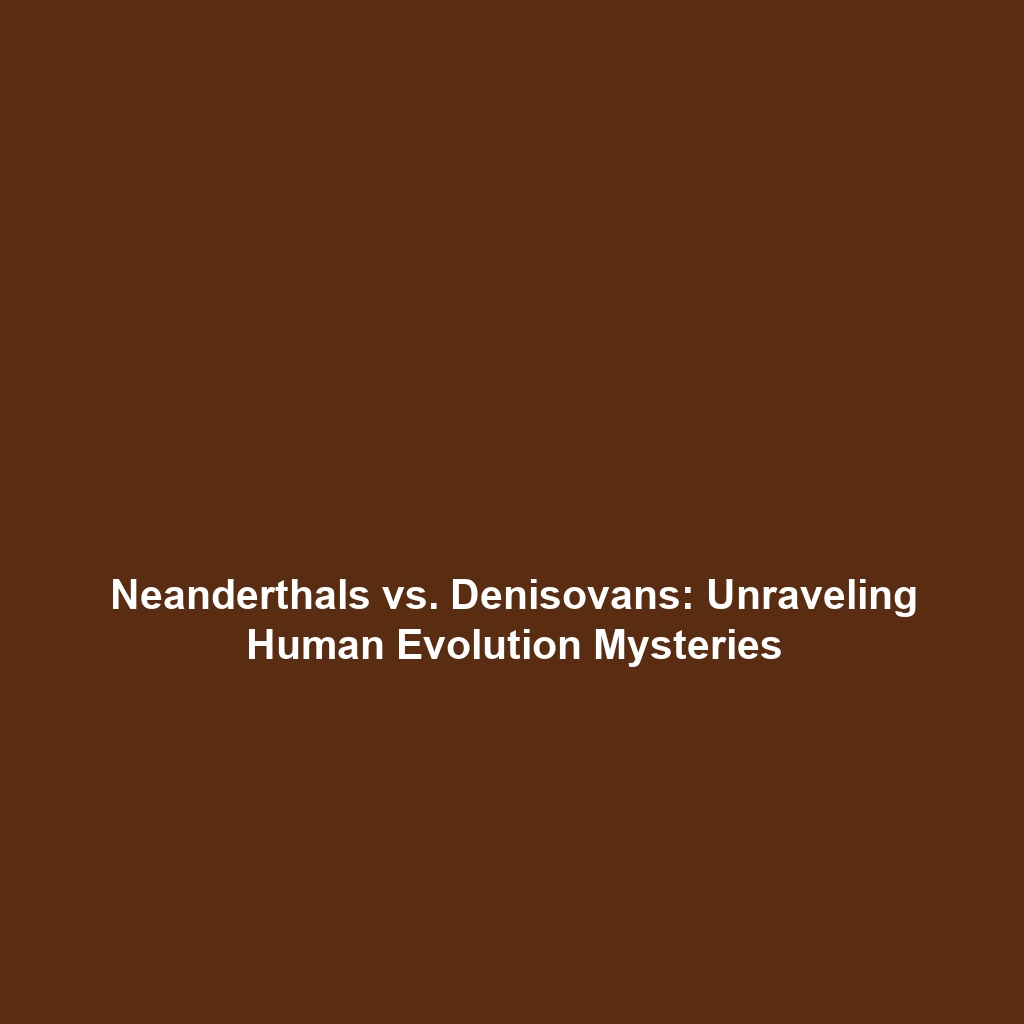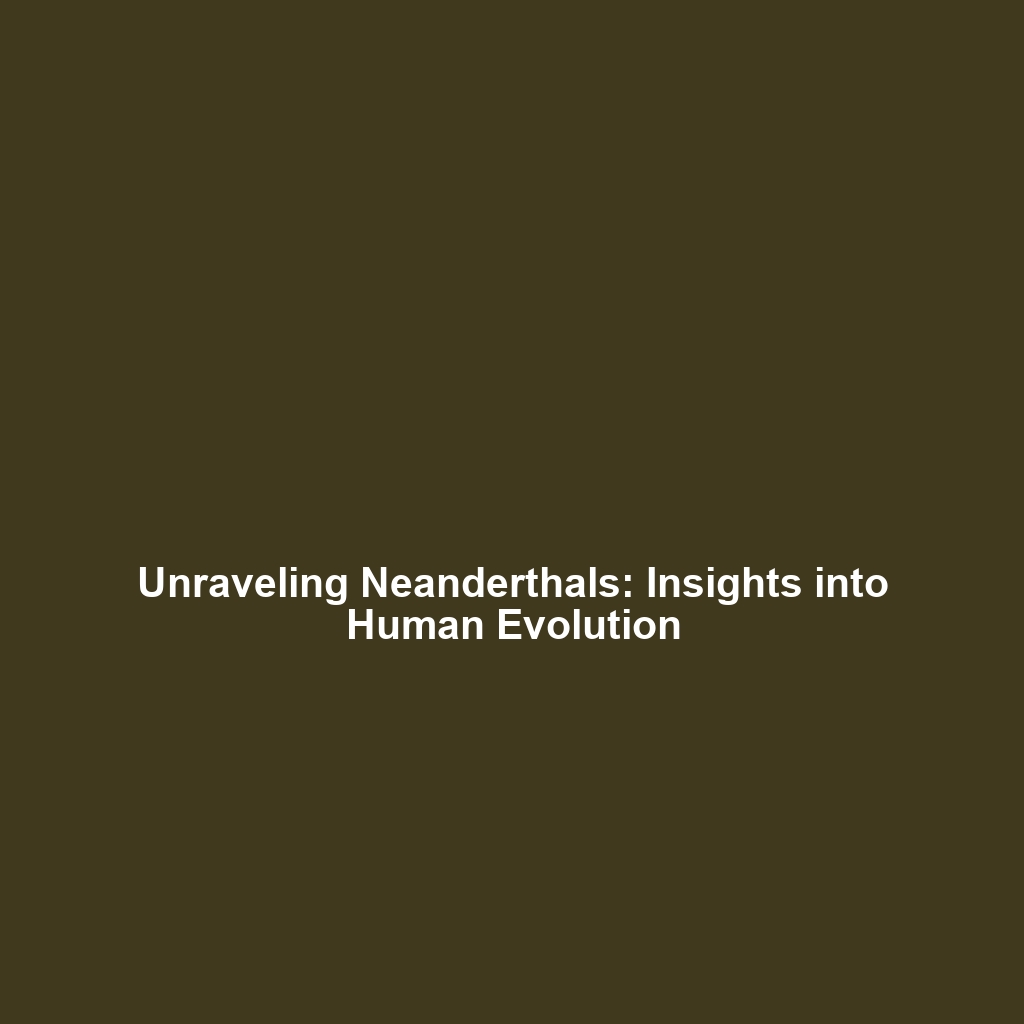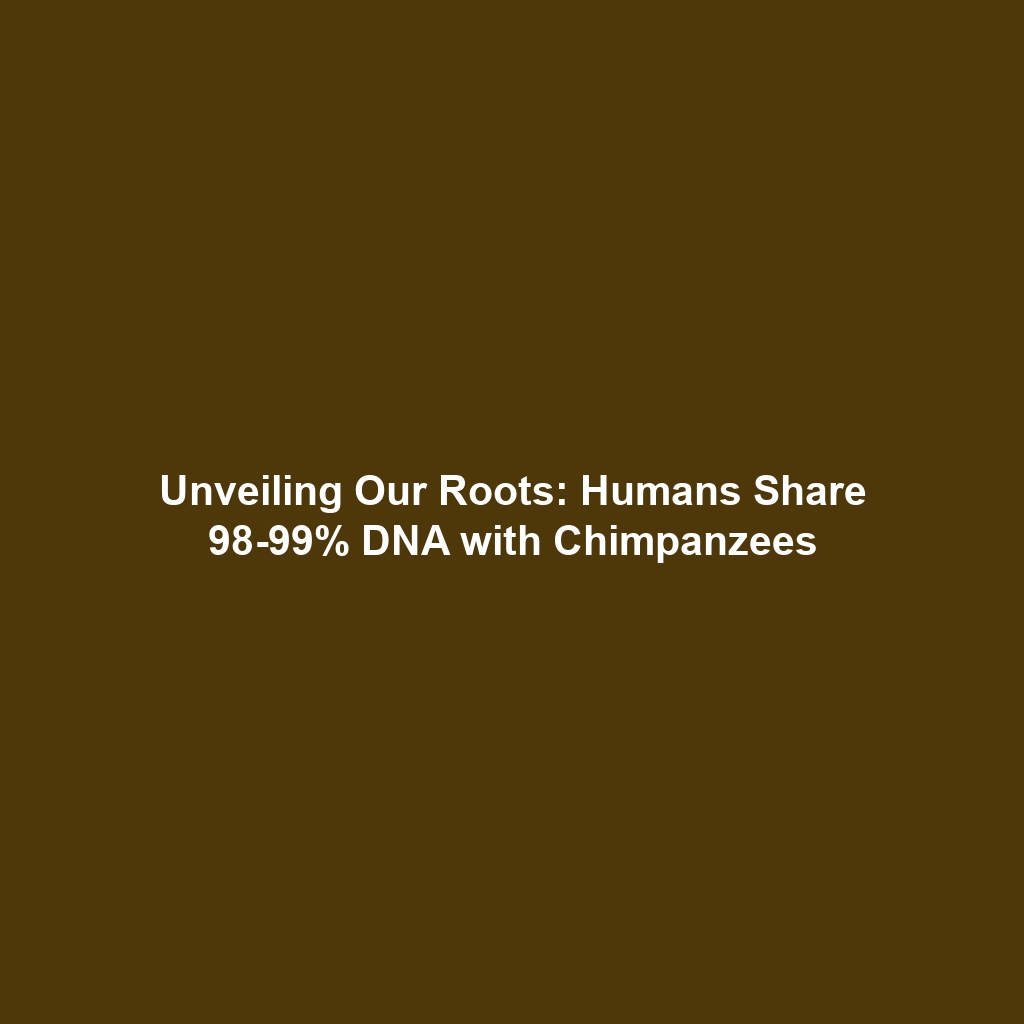Neanderthals and Denisovans: Insights into Human Evolution
Introduction: Neanderthals and Denisovans are two prominent ancient human species that offer critical insights into the evolutionary narrative of modern humans. These fascinating hominins, which inhabited various parts of Europe and Asia, contribute significantly to our understanding of human ancestry, adaptation, and diversity. The study of Neanderthals and Denisovans not only deepens our knowledge of human evolution but also raises compelling questions about the genetic legacies that shape contemporary humanity. This article delves into these ancient populations, exploring their significance in the broader context of human evolution.
Key Concepts
Neanderthals
Neanderthals (Homo neanderthalensis), existed approximately 400,000 to 40,000 years ago. They are often depicted as robust beings with distinct physical features, such as a large brow ridge and shorter stature, which likely adapted to cold environments. Studies suggest that Neanderthal culture included tool-making, art, and possibly ritualistic behaviors, showcasing their complex social structures.
Denisovans
Denisovans are a lesser-known group of ancient humans, recognized primarily through their genetic material rather than extensive archaeological findings. Discovered in the Denisova Cave in Siberia, they lived around the same time as Neanderthals but had a distinct genetic makeup. The significance of Denisovans extends to their interbreeding with modern humans, contributing to the genetic variability present in contemporary populations, particularly among Oceanic and Asian groups.
Applications and Real-World Uses
The study of Neanderthals and Denisovans informs various practical applications in anthropology, genetics, and even medicine. For instance:
- Genetic Research: Understanding how Neanderthal DNA influences modern human health, including susceptibility to diseases.
- Anthropological Insights: Providing context for the evolution of human traits, behaviors, and cultural practices.
- Conservation Efforts: Informing strategies that acknowledge the genetic diversity contributed by ancient hominins to contemporary human populations.
Current Challenges
Despite significant advancements in researching Neanderthals and Denisovans, several challenges remain:
- Incomplete Fossil Record: Limited fossil evidence hampers comprehensive understanding.
- Genetic Analysis Limitations: The complexity of ancient genomes poses difficulties in accurate interpretation.
- Public Misconceptions: Overcoming stereotypes and inaccuracies in popular representations of Neanderthals and Denisovans.
Future Research and Innovations
Future research on Neanderthals and Denisovans is poised to benefit from emerging technologies such as:
- Advanced Genetic Sequencing: Enhancing our ability to analyze ancient DNA and understand its implications for human evolution.
- 3D Imaging Techniques: Allowing detailed studies of bone structures and artifacts associated with these ancient groups.
- Interdisciplinary Approaches: Collaborations among anthropologists, geneticists, and archaeologists to foster holistic insights.
Conclusion
Neanderthals and Denisovans offer vital clues to understanding human evolution, shedding light on our shared ancestry and the complexities of human development. As research continues to unveil new findings, it emphasizes the importance of these ancient hominins in contemporary discussions about human diversity and adaptation. For those interested in deepening their understanding of human evolution, exploring other relevant topics such as Homo sapiens and early human migration can provide additional context and information.









